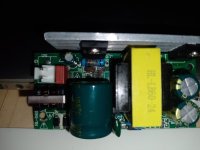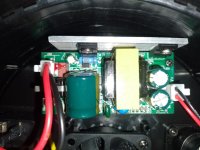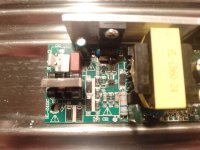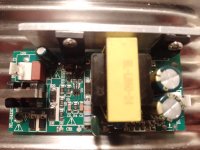Jazzburger
Member
- Joined
- Mar 19, 2024
- Messages
- 26
This is not specifically a computer problem, but I have found great help from this forum, when I have worked on pc power supplys, so here we go.
I have this damaged led par spotlight. The tube fuse is dead and the psu-board has all kinds of visible damage. I would like to try to repair this.
So I would need help to identify these components, especially the resistor. The red one is fuse, and the small ones are diodes?
I have (tried) written down the markings on the visibly damaged components. I also have "identical" working spotlight for comparison. But the psu board on that is different? (Yes, these are very cheap asian spotlights so there is no consistency.)
I have this damaged led par spotlight. The tube fuse is dead and the psu-board has all kinds of visible damage. I would like to try to repair this.
So I would need help to identify these components, especially the resistor. The red one is fuse, and the small ones are diodes?
I have (tried) written down the markings on the visibly damaged components. I also have "identical" working spotlight for comparison. But the psu board on that is different? (Yes, these are very cheap asian spotlights so there is no consistency.)






